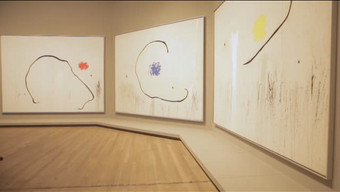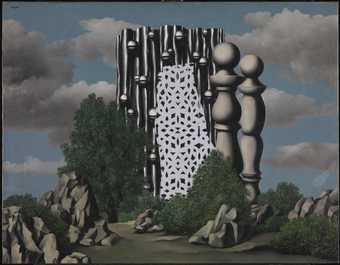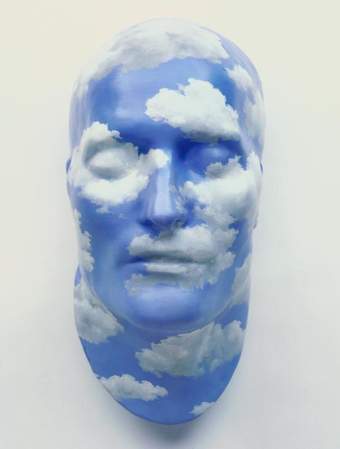Hi, I’m Storm Thorgerson of Norwegian ancestry, and I’m a designer of album covers. I have done rather too many album covers for some people’s liking, predominantly for Pink Floyd, Led Zepperlin, 10CC and more recently, Muse, Cranberries, Biffy Clyro – good band – et cetera, et cetera.
I probably first came across Magritte via my mother, and I think my mother rather indirectly encouraged my interest in art, particularly in painting. And Magritte was probably an early interest, I think because he dealt not with technique so much as with ideas, and some of them are quite funny. I like to look, because it makes me smile. And I think that Magritte may have influenced other people, because his ideas are quite easy to assimilate. They are not terribly complex.
I think I took away from Magritte a sort of love of oddity, or oddness, or rather, juxtaposition or contrariness. He used to play with the reality, you know, so in a sense I have to set it up as a real thing which has been slightly twisted – that’s the contrariness, the oddness. We often stage these things for real and don’t do them in a computer because the reality has its own attributes. What you see is what you get. If you were to do it as a drawing or an illustration or in a computer, it would always remain a fantasy, not a real thing – and it’s really fun to do a real thing, let me tell you.
I mean, I’m very interested in intentional ambiguity. You know what it is, but not why it is. You might know what it is, but not how it is. There was one particular cover that was very consciously about Magritte. It was a sort of homage. It was called ‘Wish you were here’ for Pink Floyd, and we did four pictures, and the four images included the man on fire, a man diving into a lake, a veil floating in the air in Norfolk, and the man in a desert who had no features. The one that was on the back cover, which was the man in the desert, is very obviously, and was supposed to be, a Magritte thing. So I think there is a certain Magritte feeling to the cover. It does confound you a bit, because you look at it and think, well, is this real? I mean, I am predominantly an image-maker, so I try and come up with images that will suit the music. In the contemporary world, rather than in a gallery, I’m trying to persuade the viewer to look again, to give the album cover a second look as they will give them in a gallery so partly you look at it and say, ‘Well, that’s pretty silly, or strange, or weird – what does it mean?’






